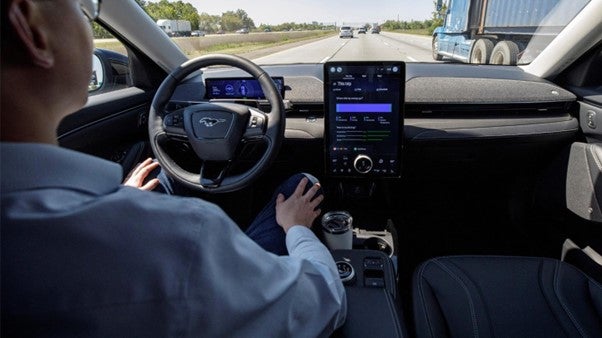It was a car with a split personality: a family staple that also bred wayward sporting variants. It was a hugely successful car and model name, but spanning three decades, the Escort story was not wholly unblemished. The European launch of the Mark IV Escort in 1990 was one of the most embarrassing and flawed product launches in Ford’s history. But that wake-up call was much needed and taught Ford some important lessons.
The Ford Escort did very good things for Ford in Europe. The 1968 Mark 1 Escort was the first integrated European model, being assembled to a common design in Cologne (Germany) and Halewood (England). Replacing the odd looking Anglia, it was a mould breaker combining good looks with very competitive pricing.
1968: a winning formula
The 1968 Escort marked an important development for Ford in Europe. It was the first car developed jointly by the British and German arms of the company – although it was designed in Britain. Previously, each of the two countries had largely produced and sold its own vehicles, but every Ford vehicle made in Europe since the Escort has been developed on a pan-European basis.
After introduction, more Ford Escort variants were gradually introduced, including a four-door saloon, an estate, a van derivative and the sporty RS1600 and Mexico models (the latter was named in honour of the Escort’s victory on the 1970 London to Mexico World Cup Rally). And that sporting success was absolutely key to the development of the Escort image. In basic form it was a good family car, but sporting variants and rally success helped to confer good technology and engineering values across the whole range. From the original Twin-Cam of 1968 to the final Ford Escort RS Cosworth of 1996, there was always one, sometimes several, high-performance ‘flagship’ models in the Escort line-up. Each of these cars offered more than any other Escort then on sale – more performance, more equipment and better driving dynamics. Ford also made a point of tying up with reputable sporting technology providers like Lotus (remember the Lotus Cortina?) and Cosworth (engines).
The Escort name saw a number of significant groundbreaking technical innovations. The RS1600 of 1970-1974 and the successor RS1800 (1975-1977) used the Cosworth-developed BDA engine. This was the first series-production saloon to use a four-valves-per-cylinder power unit and the engine design was closely related to that of the Ford-Cosworth DFV Formula 1 power unit. In 1987, a further milestone for Escort was the introduction of a mechanical anti-lock braking system (ABS) to the range. A joint development between Ford and Lucas-Girling produced the new system.
How well do you really know your competitors?
Access the most comprehensive Company Profiles on the market, powered by GlobalData. Save hours of research. Gain competitive edge.

Thank you!
Your download email will arrive shortly
Not ready to buy yet? Download a free sample
We are confident about the unique quality of our Company Profiles. However, we want you to make the most beneficial decision for your business, so we offer a free sample that you can download by submitting the below form
By GlobalData1980: Escort moves to front drive (but it’s not a ‘World Car’!)
In 1980, the Mark III Escort underwent the seismic change to front-wheel drive and a compact, transversely-mounted engine layout. These were also the first Ford Escorts to have independent suspension front and rear, as well as hatchback bodies. The Escort was a class leader in a number of European markets – most notably the UK. A new generation of high-performance Ford Escorts also appeared in 1980 – the XR3, with a 96bhp, 1.6-litre engine. It was soon succeeded (from 1982-1990) by the 105bhp fuel-injected XR3i. The XR3i chimed with the brash, ‘loadsamoney’ culture of the times – especially in Britain. In the 1980s it never seriously challenged the supremacy of the VW Golf GTi in Europe, but it was certainly the right product for Ford to tap into the ‘hot hatch’ boom of the time.
The Mark III Escort was also heralded as a ‘World Car’ when Ford announced that it would be made in North America and also in South America. That ‘World Car’ tag was something of an exaggeration and it wasn’t until the 1990s that Ford could legitimately claim to be making cars on global platforms with high commonality across all operating regions.
The European Escort was indeed assembled in South America, being launched in Brazil in 1983. Production was transferred to Pacheco (Argentina) in 1995. Another derivative of the Escort front-wheel drive concept, re-engineered for the North American market was launched in 1980 for assembly at the Ford plant in Wayne (Michigan). But the American Escort was always a very different car from the European model and in 1990, it was replaced by a new design derived from the Mazda 323 platform.
The 1980s also saw an Escort-based four-door saloon (notchback) variant, badged as Orion. That car was largely a response to Ford worries that the radically styled Sierra (‘jelly mould’ replacement for the more traditionally styled Cortina) needed a saloon stable mate. Ford rushed it off the Escort platform. The Orion name stayed for the saloon Escort until 1993, when it was dropped.
1990: Mark IV off to a disastrous launch
Even now, recollection of the launch of the Mark IV Escort in Europe in 1990 must cause some discomfort in Dearborn, nightmares in Warley (England). Perhaps the success of the Mark III had bred a degree of complacency at Ford, but the new car got an unprecedented caning from the motoring press. The main criticisms were the driving dynamics (soggy suspension) and poor engines. Ford went into overdrive to correct as much as it could, as quickly as possible: anti-roll bars left off some variants were hastily introduced along with a host of other technical improvements. The car went on to perform reasonably well in the market, but the Escort name had a black mark against it. Subsequent Ford product launches in Europe indicated that lessons had been learnt. The Mondeo, in particular, was hailed as class-leading in its driving dynamics – qualities that also applied to the Fiesta and the Ka. Better to have the cars ‘sorted’ before launch, rather than engage in expensive and embarrassing retrospective improving.
On the sporting front, mention should be made of the Escort RS Cosworth of 1992-1996. This was the most powerful Escort road car, with a race-proved turbocharged 16-valve four-cylinder engine, which produced 227bhp in standard form. With its highly extrovert wing/spoiler styling package, which was developed with wind-tunnel testing, it had F1-style aerodynamic downforce as road speeds rose. In standard form the car could reach 140mph.
1998: Halewood ‘awarded’ Escort runout until 2000 and Jaguar X400
In 1998, all European production of the Ford Escort was transferred to Halewood. The Escort was on extended runout until production finally stopped in July 2000 (the car remains on sale in the UK until the end of the year). The Transmissions Plant at Halewood will continue as a Ford plant. The Multi Activity Vehicle (MAV), which was originally planned to be built at Halewood, was dropped and Halewood’s Vehicle Operations Plant will become a Jaguar plant prior to commencement of Jaguar X400 (BMW 3 Series fighter) production later this year.
The new car built at Halewood reinforces the higher volume strategy for Jaguar initiated with the S-type. As Nick Scheele, Chairman, Ford of Europe, said before the Jaguar S-type started: “Over the course of the next four years we will progress (Jaguar) from being a company with just two model lines selling 45,000 cars a year to being a full-line, four model premium vehicle manufacturer producing 200,000 vehicles each year.” Much of the increased production, including X400 built at Halewood, is destined for export to the US (which has raised the spectre of the eventual shifting of some Jaguar production to the US – made even easier now the cars are being built on Ford platforms). Fortunately for Halewood, the high sterling problem that has done for Dagenham is not so serious: against the dollar, sterling has stayed pretty stable.
While Halewood gets a very positive new start with the new Jaguar model, many in the UK auto industry will quietly mourn the loss of the Escort. The ‘small car that isn’t’ performed especially well in the UK market, where Ford is still market leader. It is fair to say that Ford has long been considered a domestic brand by many of its customers in the UK. But when Dagenham stops making Fiestas, Ford will no longer be making a volume Ford-branded car model in the UK. Will the customers notice or care? Time will tell.
1999: Escort name replaced by Focus
When a carmaker drops a name like Escort (almost a brand in itself) – established over decades – in a key market segment (the lower medium ‘C’ segment is the largest in Europe), there is understandable nervousness over picking a replacement name. Legend has it that Jaques Nasser grew so tired of the endless focus groups and discussion surrounding the question that he eventually imposed ‘focus’. When the name first appeared it certainly sounded unusual, but the Focus car and the name itself have quickly become established in the European marketplace.
Fig 1: Ford Focus Sedan (a big seller in US)

But dropping Focus-based MAV could prove costly
The Focus has performed well so far, but Ford observers have noted that the late decision not to proceed with a one-box (monospace) version – known as the Multi-Activity Vehicle or MAV – leaves Ford seriously weakened in product terms, especially in Europe. The Renault Scenic (Megane platform) and Opel/Vauxhall Zafira (Astra platform) compact Multi-Purpose Vehicles (MPVs) have been very successful in volume terms. Spinning these cars off lower medium car platforms appears to be a very sensible manufacturing and product strategy. These cars have a small footprint (appropriate to European driving conditions) and can be produced at relatively low cost on generic lower medium platforms. Most recently, Citroen has introduced the Picasso and a VW Golf-based compact MPV is expected next year. Most carmakers are actively engaged in entering the mini MPV segment.
Arch rival GM’s innovative 7 seater (‘flex 7’ system) Zafira seems to have been the final straw for Ford. The engineering costs involved in creating a broadly matching product (with 7 seats) appear to have been too high, after the company had already progressed too far with an inferior design. The Focus-based MAV was scrapped and Ford buyers will likely have to wait for the next generation Focus (2003) before getting a compact MPV option along the lines of the Zafira. Whatever the undoubted merits of the Focus (it has received very good reviews in the motoring press and has good driving dynamics) and is selling encouragingly well in Europe and in North America, this leaves a product gap that has got Ford dealers in Europe worried. Our estimates indicate that monospace compact MPV products are rapidly approaching a fifth share of the total lower medium market in Western Europe. By 2003, that share could be hitting a third. Can Ford really afford not to be present in such a booming market niche for another three years?
Table 1
Estimated Western European sales in the lower medium ‘C’ segment class 1998 and 1999 – selected models only
Thousand units

Source: trade associations and industry estimates
Fig 2: Ford Escort Mark 1 RS2000





